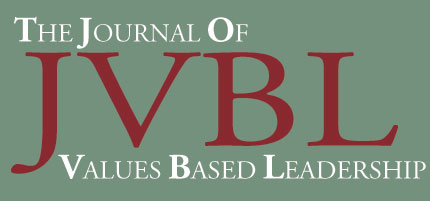- CONTENTS:
- Letter from the EditorTable of ContentsIntroducing Ethics Legislation: The Courage to Lead After 200 Years of SilenceConscious Leadership: Transformational Approaches to a Sustainable FutureEarning the Right to Lead in Defining Moments: The Act of Taking LeadershipThe Moral Foundations of Ethical LeadershipBook Review of Gurus on Leadership
- LETTER FROM THE EDITOR
"The Power of One"
Learning from the mistakes of the past… was it not just less than a decade ago that the common opening statement to a business ethics-related discussion began “in the wake of Enron…?” After the passage of Sarbanes-Oxley in 2002, Congress attempted to rein in corporate greed and fiscal mismanagement through statutory reform. And now, at the time of this writing, an entire eco-system is being destroyed in the Gulf of Mexico and the far-reaching, catastrophic consequences of unbridled, big business greed and backroom governmental dealings are not yet fully known. Ostensibly, the new preface to the same business ethics discussion will be “in the wake of British Petroleum… .”
The importance of principled leadership, even if exemplified by the acts of just one individual, is critical at a time when the fragile balance of the planet’s resources is precariously threatened.
Using a rather ominous metaphor, this urgency of values-based decision-making is further emphasized by a series of events which occurred during World War II on St. Matthew Island, situate off the coast of Alaska in the Bering Sea. A Coast Guard radio station was constructed and defended on this island during the course of the war. The accounting continues:
“The weather was awful, and keeping the base supplied with food was chancy. Someone decided to stock the island with an emergency supply of food by importing and releasing twenty-nine reindeer — a number a Fish and Game biologist had calculated to be well within the island’s ‘carrying capacity.’Every farmer understands carrying capacity. Graze too many cows on your pasture and pretty soon you won’t have a pasture anymore (or any cows, for that matter). It is in his self-interest to keep the balance going between his herd and the rain and the grass. So long as he does, he’s got a substantial source of milk and meat.
It was the same for those reindeer on St. Matthew Island. Keep the balance going between animals and the stuff they eat— lichens and willow bushes, mainly — and you’ve stocked the island with a bottomless meat locker. If storms kept the supply ships away, the men could shoot a reindeer for dinner.
Barged over from Nunivak Island, these twenty-nine animals found themselves in reindeer paradise — dense strands of willow bushes and vast, unbroken carpets of lichen four inches thick. There were no wolves, no bears. No predators at all, except for the men of the Coast Guard station. When the war ended, the base was shut down and the last predator left.That same Fish and Game biologist returned to the island twelve years later and found those original 29 reindeer had become 1,350; just a little short of the number his colleagues had calculated as the island’s ultimate carrying capacity. The animals were fat and seemed to be in excellent health. But he also noticed that the lichen mats were starting to look a little thin.
St. Matthew Island is so far off any beaten track he didn’t return for six more years. When a Coast Guard cutter dropped him off again in the summer of 1963, as his boots hit the shore he saw reindeer tracks, reindeer droppings, and trampled willows. And everywhere he looked, wall-to-wall reindeer. In just six years those 1,350 animals had become 6,000 — far more than the island could ever hope to carry. The lichens were sparse, and large areas of tundra were bare. Not surprisingly, the animals didn’t look so fat and healthy anymore.
Other commitments kept him from returning for three more years. When he did, in 1966, the island he found was just about unrecognizable. The willows were gone. The last patches of lichen were gone, too, chewed down to gravel. Reindeer skeletons were scattered over the tundra. He found only 42 animals alive.” (Ray C. Anderson, Confessions of a Radical Industrialist).
Now, so the story goes, without a supporting eco-system and proper balancing of resources and prudent, managerial oversight, all the reindeer have disappeared from St. Matthew Island.Unlike the global challenges faced daily, this saga starkly shows what can happen to a microcosm of the Earth with respect to the unmanaged depletion of renewable resources. We, on the other hand, are faced with the much more daunting task of protecting rapidly decreasing, non-renewable resources.
The authors of this issue all reflect the hope and determination of what the power of one can do. Now, it is time to listen…and to act as conscientious stewards of human, natural, and financial resources.
— Elizabeth Reiner Gingerich, J.D., Editor

